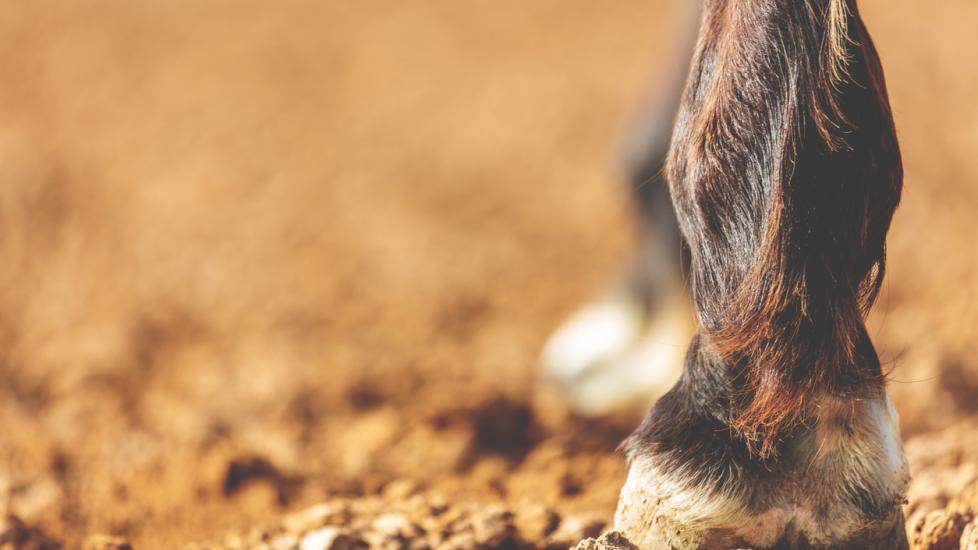Fusing Joints in Horses
What is Fusing Joints in Horses?
Ankylosis is a medical term for abnormal stiffening of a joint due to fusion of the bones. It can occur naturally or as a desired result of a treatment called facilitated ankylosis, used for instance in cases of severe degenerative joint disease. Arthrodesis is the surgical procedure to fuse joints; typically involving stainless steel screws and plates.
The process of joint fusion, or ankylosis, is triggered by factors such as infections, injury, or degenerative joint disease, that lead to chronic inflammation and joint degradation. Immobility in the joint occurs from the breakdown of surrounding structures and fibrosis (unhealthy joint tissue replaced by scar tissue). In an effort for the body to compensate and stabilize the joint, it produces extra bone and mineralizes, or hardens, the soft connective tissues in the joint. Ankylosis is complete when the joint is destroyed and filled with new bone.
Depending on the cause, ankylosis can occur in any age, breed, or sex. It occurs most commonly in low-motion joints such as the distal hock joints, joints in the neck and back, and the pastern. Though less frequently, it can occur in high-motion joints like the carpus, shoulder, and fetlock.
Symptoms of Fusing Joints in Horses
A horse experiencing fusing joints may show the following signs:
-
Joint immobility
-
Joint stiffness
-
Decreased range of motion
-
Pain and Inflammation
-
Disuse atrophy
-
Enlarged or thickened joints
-
Neurologic deficits
Causes of Fusing Joints in Horses
Causes of fusing joints in horses include:
-
Septic arthritis
-
Traumatic injury
-
Degenerative joint disease
-
Conformational abnormalities
-
Surgical arthrodesis
-
Congenital (very rare)
Diagnosing Fusing Joints in Horses
A diagnosis of ankylosis is based off history of the horse, physical exam, and a lameness exam including flexion tests and radiographs. Radiographs show mineralization of the soft tissue surrounding the joint and production of new bone in and around the joint. In some cases, advanced imaging like computed tomography (CT) or magnetic resonance imaging (MRI), may be necessary for a complete diagnosis.
Treatment of Fusing Joints in Horses
Ankylosis is slow-progressing and is an irreversible disease. The early phases of the disease process are painful due to the inflammation, but once the fusion is complete the source of pain (joint inflammation) is no longer present. Early treatment involves making the horse comfortable, which typically includes anti-inflammatory medications such as phenylbutazone, intraarticular injections with steroids and hyaluronic acid, and joint supplements. In some cases, extracorporeal shock wave therapy is beneficial to alleviate discomfort. Low level exercise is recommended and may increase the rate of development of new bone and expedite the ankylosing process.
Because natural ankylosis can take up to and sometimes over a year to set in, medical or surgical treatment may be recommended. A facilitated ankylosis can be performed with surgical drilling, laser surgery, or a chemically facilitated breakdown of the joint. A surgical arthrodesis removes all the cartilage in the joint and places metal implants to immobilize it.
The best shoes or hoof trimming regimen will be based on what is necessary to balance the horse’s hoof and decrease the amount of stress on the limb.
Recovery and Management of Fusing Joints in Horses
Ankylosis is irreversible, however, if the disease affects low-motion joints there is a favorable prognosis. With proper management these horses can often return to an athletic career. High-motion joints with ankylosis, however, carry a poor prognosis. They often require arthrodesis as a life-sparing procedure.
Horses with a fused joint are at a higher risk for fracture in the affected joint. Additionally, they are susceptible to supporting limb laminitis in the unaffected limb. In addition to pain management, providing an area of soft bedding for the horse to rest in is important.
Fusing Joints in Horses FAQs
How long does it take for horse hocks to fuse?
Ankylosis may take 6-12 months to be completed and is irreversible. Once completed, the ankylosed joint is immobile and not painful.
Can you ride a horse with fused hocks?
Ankylosis in low-motion joints like the joints of the hock have a good prognosis for return to soundness and athletic activities.
References
-
Coleman, M. & Whitfield-Cargile, C. (Ed.) (2020). Large Animal Internal Medicine (6th ed.) (pp. 1197-1266). St. Louis, MO: Mosby Elsevier.
-
Smith, B (Ed.). (2009). Large Animal Internal Medicine (4th ed.) (pp. 1242-1243). St. Louis, MO: Mosby Elsevier.
-
Auer, J. & Stick, J. (Ed.) (2006). Equine Surgery (3rd ed.) (pp.1073-1080). St. Louis, MO: Elsevier.
-
O’Brien, T. Veterinary Information Network. Radiography and Radiographic Interpretation of the Tarsus. 2004.
Featured Image: iStock.com/eyecrave productions
